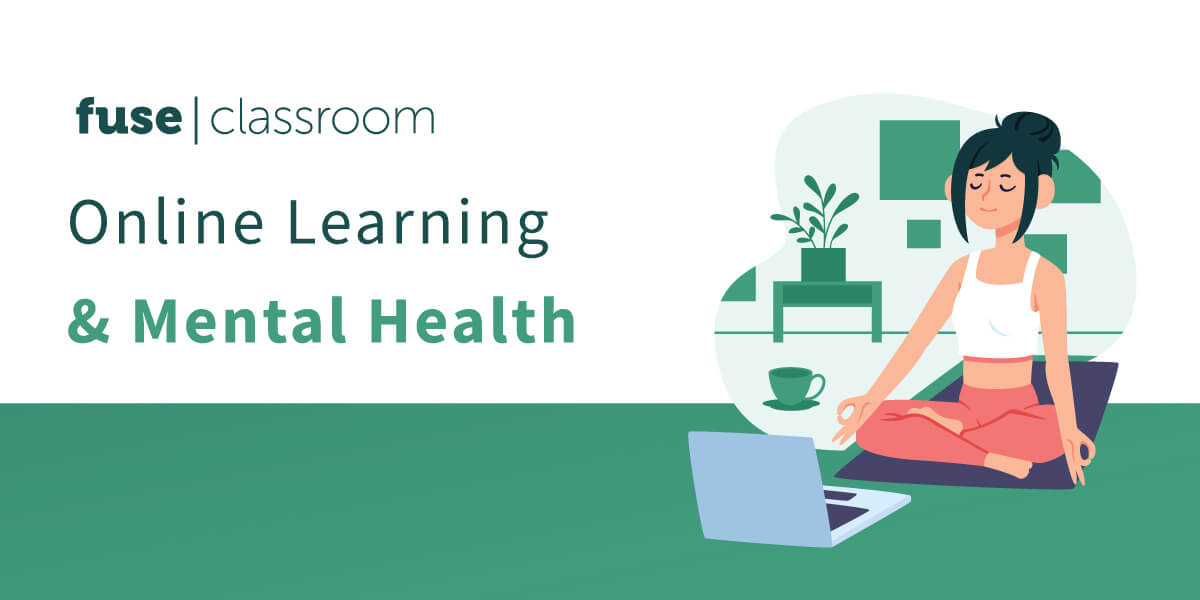While a convenient solution to pandemic lockdowns, stay-at-home learning brought an unprecedented set of challenges. Among the many online learning challenges students faced, one of the most prominent ones was mental health strains.
The Connection Between Online Learning and Mental Health
As school and home environments merge, home and school stressors do too. On top of school work, students have to deal with internet connectivity problems, siblings, privacy, space, and chores. Situations like these can add to academic pressure, leading to heightened mental health issues such as the ones below.
Virtual Fatigue
One major issue students face when learning online is fatigue, specifically zoom fatigue. Zoom fatigue refers to the weariness felt after a long zoom session or video call. Sitting in front of the computer for a long period of time can make information retention difficult, leading to anxiety and stress.
In an interview, clinical psychologist Dr. Brenda Wiederhold stated “Our brains are used to picking up body language and other cues, not to mention increases of dopamine, that are experienced during face-to-face communication. On a video call, something is off, and our subconscious brain is reacting to that. Communication isn’t in real-time, even though we may think it is.” This can feel extremely exhausting, even though we are just sitting in front of the computer.
Isolation
School is where students make friends and socialize. Without friends, online learning can feel lonely and unmotivating. Students may also struggle with maintaining authentic engagement with the learning process.
A 2020 National Survey by America’s Promise Alliance states that almost one-third of high school students reported feeling unhappy and depressed outside their normal ranges during the beginning of the pandemic.
Check out this blog for ways to stay connected: Students and Social Distancing: Staying Connected in Isolation.
Increased Stress and Anxiety
Students follow a routine schedule at school. There is a designated time for everything, from classes to lunch breaks and extracurricular activities. This is not necessarily true for online learning, and it can be difficult for students to stay focused. With home distractions, students might find it difficult to concentrate. As a result, students are more prone to procrastination, which can lead to missing deadlines, stress, and anxiety.
There is little separating between home and school making it hard to compartmentalize. Some students might let school work take over their free time. On the other hand, distractions at home can lead to other students feeling like they are not giving their 100% to school work. This battle between not doing enough or doing too much can leave students feeling unbalanced and stressed.
How to Balance Online Learning and Mental Health
Create and Follow a Schedule
Having a regular routine can be helpful, especially in times of uncertainty and stress, and can help students achieve their tasks. Organizing one’s day can help students feel productive and reduce stress caused by the disorder. Implementing structure gives students a sense of control and improves focus.
Exercise
Online learning can give way to a sedentary lifestyle. It is of immense importance to exercise regularly and enjoy time away from the computer. Indeed, physical activity releases endorphins, which help improve mood. Additionally, outdoor time can help students release the emotional and mental exhaustion caused by online learning.
Create a Designated Study Space
Online learning makes it hard to tell when school ends and life begins, and a designated space for learning can help create balance. Designated quiet study spaces can help students focus and reduce distractions.
Students should think of school-time and home-time as two separate states of mind. During “school-time,” students should cut out distractions and enter a focused and productive flow. Otherwise, students should enjoy family and friends without the stresses of school.
Take Care of Your Body/Self Care
Along with regular exercise, students should keep a regular sleep schedule, eat well and take computer breaks. Lack of a schedule can result in the disruption of one’s sleep cycle. This is especially true in learn-from-home cases as students can end up spending way too much time on the computer and might have trouble getting to sleep. Since students are learning from home in the comfort of their own rooms, they might not necessarily follow a definitive routine for lunch breaks and dinners. This can also result in mindless snacking.
The online learning process can be stressful and isolating, but there are many ways to stay focused and motivated. Staying organized and following a schedule can reduce stress and help students achieve their goals. Designating specific areas in the house for school work can also help maintain balance.
Effective online learning tools also help reduce unnecessary hassles and delays. Fuse Classroom helps students, teachers, and administrators stay organized and conduct classes and activities seamlessly.

